Research: Education by Design
The idea of design
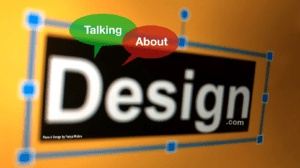
Design is core to my identity, to who I am. Education is the space within which I function but I try to approach everything I do as a designer.
Herb Simon, in his book, The Sciences of the Artificial, famously wrote:
Everyone designs who devises courses of action aimed at changing existing situations into preferred ones.
In one fell swoop, Simon situated design as playing a role across a range of human-centered professions, whether it be graphic design, architecture, medicine, or social policy.
And most relevant to us: Education.
Which is why I prefer to call myself an educational designer (rather than educational researcher). I see the world through the lens of design. Everything in the world around me, education, parenting, research, to me are enriched by taking on this perspective: a design lens as it were.
It is no surprise, thus, that one of my favorite courses I teach is called Education by Design. The course intro is as follows:
DCI 691 (Education by Design) is a course about design. Design as a way of thinking and as a process that values collaboration, context, and diverse perspectives. Design as an approach that generates creative solutions to complex (wicked) problems of practice, particularly in education.
Design is both a noun and a verb, a product and a process. Design is central to the construction of any process or artifact—be it a website or a car; an ATM machine or educational policy. Design touches on many different disciplines—science, technology, engineering, education, psychology, sociology, organizational behavior, and art, to name a few. A multi-dimensional issue like design, particularly in education, requires a multifaceted approach.
for The 5 spaces for design in education
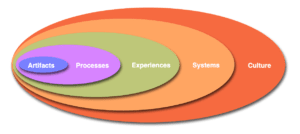
Everything in education is designed (one can argue whether this is intentional or not or whether the outcomes are the ones we want/like) but the broader point is that there is nothing “natural” about the systems of education we have around us. They are constructed by us, by humans. Whether the idea of the curriculum or seat-time, learning metrics or the idea of problem-based learning, or the idea of school, these are all human creations, structures adapted for some purpose (to quote Perkins and his definition of design).
That said, there is something fundamentally different about designing a textbook v.s. a chair; or designing a school v.s. designing an instructional plan. The differences have as much to do with the scale and the complexity of the tasks as it has to do with human psychology i.e. people’s desires and needs. That is not all. Everything we do in education works within broader organizational, policy and information structures that constrain and guide what we can do, and the complex feedback loops that can emerge from the inherent complexity (wickedness) of the enterprise. What this means is that designers have to function differently depending on the “space” they are working within.
In our recent work, Melissa Warr and I, have been developing a framework that we are calling the Five Spaces for Design in Education. In brief, we argue that it may be productive to think of five spaces for the design in education: artifacts, processes, experiences, systems and culture. Moreover, working within these spaces requires different tools, elements, practices, knowledge and judgement that we as designers need to bring to the task.
The best introduction to the FIve Spaces Framework is a series of videos made for ASU’s Learning Sparks series. You can find all the videos here: 6 videos (on the 5 spaces for design in education
In addition Melissa Warr maintains a page on the talkingaboutdesign.com website that lists all the publications/presentations that have emerged from this line of work.
My journey through design
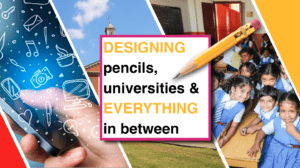
I was invited to give a keynote at the 50th Anniversary of the Industrial Design Center. It was here at IDC that I was introduced to the idea of design—something that I did not know much about before, but something I seemed to fit right into. I took this as an opportunity to look back over my journey through design and education. You can read more about it – and watch the video here.
Designing Theory
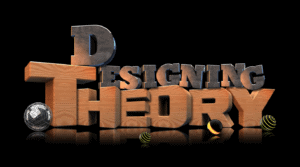
Theories play a critical role in the development of a discipline. Theories allow us to understand, explain and predict phenomena in the world. That said it is often difficult to say just where theories come from. The standard model—that data lead to laws, that in turn lead to theories—has been undermined by philosophers of science for a while now. They argue, and I would suggest rightly, that theories are often under-determined by data, i.e. there is never enough data that will, inevitably, lead us to a particular theory. This situation is particularly problematic given the important role theories play in scholarly lives.
In Warr, Scragg & Mishra (2020) we argue that it may be productive to see the development of theory as being akin to a process of design —that of creating an artifact (albeit a conceptual one) that has “a structure adapted to a purpose” and demonstrates “goodness of fit. We argue that, viewing theory development as an act of design might lead to a stronger theoretical and practical scholarship and can help us address some key challenges in the field.
Teachers as Designers
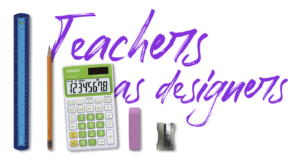
What does it mean for a teacher to be described as a designer, or for the act of teaching to be considered an act of design?
The paper cited below is a synthesis of 10 years of educational research into the idea that it is productive to see educators as designers—as designers of curriculum, designers of learning experiences. We analyzed citation patterns of key journal articles to (a) identify emergent clusters or strands of work; and (b) the manner in which the roles teachers play as designers varies across time.
Warr, M., Mishra, P. (2021). Integrating the discourse on teachers and design: An analysis of 10 years of scholarship. Teaching and Teacher Education. https://doi.org/10.1016/j.tate.2020.103274
Abstract: This article presents a content and network analysis of a decade (2007 – 2017) of highly-cited literature on teachers and design. Constructs and definitions were compared in an interpretive content analysis, resulting in 10 strands, each a cluster of literature that frames teaching and design in a particular way. A citation network analysis provided insight into how the strands are conceptually related. Further analysis highlighted how each strand described what, when, and how teachers design, and the value of considering teachers as designers. The results suggest that teaching not only includes design activities, but could be considered a design profession. This perspective has implications for teacher education, specifically the development of professional knowledge.
More here.
Blog posts related to Design
Cybersecurity & the Future of Education
I was recently interviewed by David W. Schropfer for his DIY Cyber Guy podcast. David is an expert on cybersecurity and, and that is the focus of his podcast. I am clearly not an cybersecurity expert, so I was somewhat surprised at being invited to his show. What...
My favorite(?) failure
I was recently asked to write a chapter for a book that my colleague Ron Beghetto was editing with Laura McBain, called My Favorite Failure. Failure is never fun - and to pick one that was your favorite, is like deciding what your favorite form or torture is....
100 and counting: Silver Lining for Learning
March 11, 2020 (a little over two years ago), just around when the pandemic had forced educational institutions across the globe to shut down and transition to remote learning, my friend Yong Zhao reached out to Chris Dede, Curt Bonk, Scott McLeod, Shuangye Chen and...
A Socio-cultural Perspective on Creativity, Tech & Ed
Almost exactly a year ago Danah Henriksen, Carolina Torrejon Capurro and I submitted a chapter for the second edition of the book Creativity and Innovation: Theory, Research and Practice edited by Jonathan Plucker. Given the time that had elapsed, since we had written...
Creativity online & in maker spaces
As a part of our ongoing series on creativity, technology and learning for the journal TechTrends we recently spoke with two nationally recognized scholars: Dr. Leanna Archambault and Dr. Edward Clapp. See below for introductions to both scholars as well as...
Presentation at University of Zurich
I was invited by my friend Dominik Petko, Professor of Teaching and Educational Technology at the Institute for Educational Science at the University of Zurich to make a presentation to their faculty and staff. The video of my presentation (Contextualizing TPACK...
Creativity, risk-taking & failure in education
Failure and risk-taking are essential to the creative process. It is rare that good original, creative work or ideas come together in the first try. Thus, an important component of engaging in creative practice is both an acceptance of potential failure as well as a...
Value Laden: A new podcast about ethical leadership
What is the role of values and principles in educational leadership? What can we learn from inspirational educational leaders? How did they develop their moral/ethical compass, and more importantly, how do they bring these perspectives to the work that they do? These...
STEM Futures at AAAS
ASU recently hosted, what is known as, the world's largest scientific gathering, the annual conference of the American Association of the Advancement of Science. As as part of this conference I was invited, along with Ariel Anbar and Trina Davis, to talk about our...
Youth participatory creativity in digital spaces
Ioana Literat is Assistant Professor in the Communication, Media, and Learning Technologies Design program at Teachers College, Columbia University, and the Associate Director of the Media & Social Change Lab (MASCLab). Her research focuses on the dynamics of...
Fishing for problems: Podcast interview
I was recently interviewed by Matt Schneidman (Curator, Creator, Podcast Host) for his Fishing for Problems podcast. Matt also publishes an ed-focused newsletter. Our discussion was broadly framed around educational technology and the TPACK framework - but...
Designing STEAM
Danah Henriksen and I were recently invited to present a keynote (and conduct two workshops) on design thinking and STEAM education at the 2021 NV STEAM conference, organized by the Nevada Museum of Art and Desert Research Institute. Of course, given the pandemic...
Educational Change by Design: A school for the future
How do we design a school for the future? This recent article seeks to capture (in the form of a case study) our recent experience in designing such a school. The design process was a collaborative process involving a partnership with a local school district and the...
TPACK & More: Presentation at RemoteK12 summit
REMOTE K12: The Connected Teacher Summit, was a one-day virtual summit hosted by ASU, designed for K-12 teachers and those that support and enable teachers in district public, charter and private schools. I presented a talk titled: Technology in teaching &...
Learning futures: Designing the horizon
I was recently invited (along with Sean Leahy and Jodie Donner) to present at the Winter Games, Digital Immersive Experience organized by ShapingEDU at Arizona State University. Our talk was titled Learning Futures: Designing the Horizon. We described our session as...
Punya Mishra
Associate Dean of Scholarship & Innovation
Professor, Division of Educational Leadership & Innovation
Mary Lou Fulton Teachers College
Arizona State University
Email: punya[dot]mishra[at]asu.edu
Web: punyamishra.com
LinkedIn: PunyaMishra
Twitter: @punyamishra
©
All the content (text, images, photographs, videos) on this site have been created by me, Punya Mishra, (unless specified otherwise). I would like to thank the artists/photographers/designers who have made their work freely available for re-use on sites such as Wikimedia Commons, Pixabay and Unsplash. Most of the graphics I create build on your generosity, and I am deeply grateful.
This website is designed and maintained by me, Punya Mishra, using WordPress combined the Divi plugin and is hosted on Cloudways.
